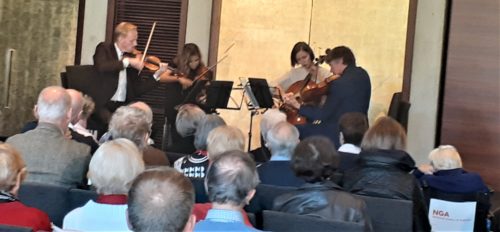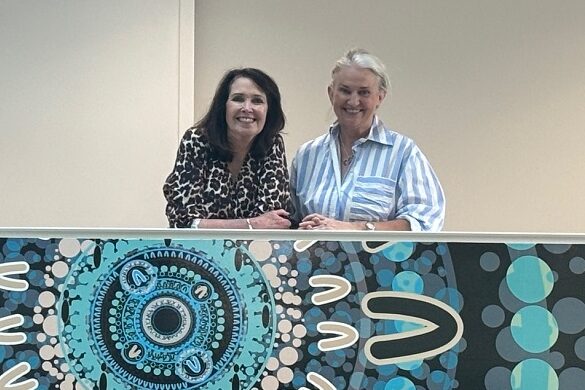
Music / “Ives Westlake Debussy”, Australian String Quartet. Gandel Hall, National Gallery of Australia. September 8. Reviewed by ROB KENNEDY
THIS concert had three composers from three different countries with three different styles of music, but similarities were heard in these “close-quarters gigs”, as the Australian String Quartet calls its performances.
Charles Ives is a composer who can still get some people bent out of shape by the mere mention of his name. Some of his music is harsh and difficult to listen to, but his “String Quartet No. 1 From the Salvation Army” is music that speaks of the grand narrative of an earlier America.
It begins like a round as the music follows itself. Then it builds to a complex yet pleasing harmonious form. The lively prelude, which is the second movement, flowed back and forth between exuberant American hymns to a more dense structure.
The perfectly balanced playing by the ASQ brought everything together. Through little eye contact, the players produce startling accuracy.
The third movement fell away from the hymn-like tunes in part, but the fourth movement was a cross between a town hall social dance, a revival meeting at a church and a mashup of everything that was heard previously. Together, it produced a stunning climax of powerful sounds ending like a national anthem.
On to Nigel Westlake’s “String Quartet No. 3”. This world premiere, that was surrounded by the music from two composers from the early 20th century, had echoes of both other quartets. Westlake’s piece was written in memoriam for his late sister. He describes this quartet as a shrine to his sister.
Full of vibrant colours like a painting, the title and inspiration for each movement was taken from paintings that Westlake’s sister had created. The soft, slow beginning of the quartet spoke of a deep loss. This profoundly beautiful music had three instruments quietly droning in the background as the lead violin hovered high above, lasting for the whole first movement.
The rhythmic fiery second movement with much forceful plucking of the strings danced with drive and colour. This music showed Westlake as most have known him, and that’s one of Australia’s greatest composers.
The shrill harmonics that opened the third movement also had the violist tapping on the body of his instrument to great effect. This mysterious turning music that sat restlessly in the ear rarely got above piano for the whole movement.
The final movement retained a lot of that mystery already set up through harmonics and four independent voices sounding as one. This built to long dynamic flourishes, and a long and showy portamento to end it all.
Debussy “String Quartet in G minor” op 10 is this reviewer’s favourite piece of his music. It touches the soul more than most of his music and that’s saying something considering the profound beauty of things such as his “Clair De Lune”.
Hearing Australia’s best string quartet play this work was an absolute treat. From the sparse lonely sounds of the third movement to sonorities that charm and irritate, this quartet has it all. For this to be the only string quartet that Debussy wrote, makes it even more of a masterwork.
All the music and the playing came together with precision and dynamic tonal brilliance, as it always does for the ASQ.
Who can be trusted?
In a world of spin and confusion, there’s never been a more important time to support independent journalism in Canberra.
If you trust our work online and want to enforce the power of independent voices, I invite you to make a small contribution.
Every dollar of support is invested back into our journalism to help keep citynews.com.au strong and free.
Thank you,
Ian Meikle, editor








Leave a Reply